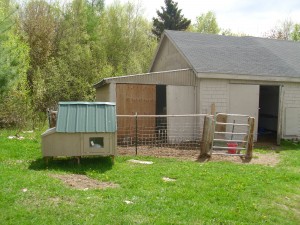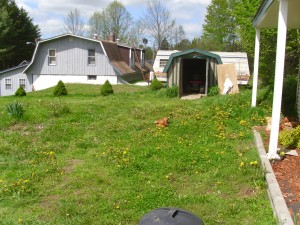Margaret Donnelly, a jute mill landowner in Dundee in the 1800s, set up the first jute mills in Bengal. In the 1950s and 1960s, when nylon and polythene were rarely used, one of the primary sources of foreign exchange earnings for the erstwhile United Pakistan was the export of jute products, based on jute grown in then East Bengal now Bangladesh. Jute has been called the “Golden Fibre of Bangladesh.” However, as the use of polythene and other synthetic materials as a substitute for jute increasingly captured the market, the jute industry in general experienced a decline. I guess jute growing was quite lucrative at one time.
Jute has entered many diverse sectors of industry, where natural fibres are gradually becoming better substitutes. Among these industries are paper, celluloid products (films), non-woven textiles, composites (pseudo-wood), and geotextiles. Who knew something so simple could have so many uses.
Raw Jute Fiber
How jute is produced. Jute matting being used to prevent flood erosion while natural vegetation becomes established. For this purpose, a natural and biodegradable fibre is essential.Jute is a rain-fed crop with little need for fertilizer or pesticides. The production is concentrated in Bangladesh and some in India, mainly Bengal. The jute fibre comes from the stem and ribbon (outer skin) of the jute plant. The fibres are first extracted by retting. The retting process consists of bundling jute stems together and immersing them in low, running water. There are two types of retting: stem and ribbon. After the retting process, stripping begins. Women and children usually do this job. In the stripping process, non-fibrous matter is scraped off, then the workers dig in and grab the fibres from within the jute stem. This reminds me of how flax is processed.
Jute is the second most important vegetable fibre after cotton; not only for cultivation, but also for various uses. Jute is used chiefly to make cloth for wrapping bales of raw cotton, and to make sacks and coarse cloth. The fibres are also woven into curtains, chair coverings, carpets, area rugs, hessian cloth, and backing for linoleum.

Jute fabric
While jute is being replaced by synthetic materials in many of these uses, some uses take advantage of jute’s biodegradable nature, where synthetics would be unsuitable. Examples of such uses include containers for planting young trees, which can be planted directly with the container without disturbing the roots, and land restoration where jute cloth prevents erosion occurring while natural vegetation becomes established.
The fibres are used alone or blended with other types of fibre to make twine and rope. Jute rope has long been popular in Japan for use in bondage. Jute butts, the coarse ends of the plants, are used to make inexpensive cloth. Conversely, very fine threads of jute can be separated out and made into imitation silk. As jute fibres are also being used to make pulp and paper, and with increasing concern over forest destruction for the wood pulp used to make most paper, the importance of jute for this purpose may increase. Jute has a long history of use in the sackings, carpets, wrapping fabrics (cotton bale), and construction fabric manufacturing industry.
Diversified jute products are becoming more and more valuable to the consumer today. Among these are espadrilles, floor coverings, home textiles, high performance technical textiles, Geotextiles, composites, and more.
Jute has many advantages as a home textile, either replacing cotton or blending with it. It is a strong, durable, color and light-fast fibre. Its UV protection, sound and heat insulation, low thermal conduction and anti-static properties make it a wise choice in home décor. Also, fabrics made of jute fibres are carbon-dioxide neutral and naturally decomposable. These properties are also why jute can be used in high performance technical textiles.
Moreover, jute can be grown in 4–6 months with a huge amount of cellulose being produced from the jute hurd (inner woody core or parenchyma of the jute stem) that can meet most of the wood needs of the world. Jute is the major crop among others that is able to protect deforestation by industrialisation.
Thus, jute is the most environment-friendly fibre starting from the seed to expired fibre, as the expired fibres can be recycled more than once.
Jute is also used to make ghillie suits, which are used as camouflage and resemble grasses or brush.
I am amazed that Jute is used for so many things. I think I have a bit more respect for the jute plant.
It’s a gorgous day here the sun is finally back out I had to share with you.
Tags: animal rescue, animals rescue maine, farm life, fiber processing, Jute fiber, jute history, jute rope, jute spinning process, jute yarn, spinning jute, vegan spinning fiber, vegan spinning wool, vegetarian spinning fibers












you explained well. Thanks for giving so much information.